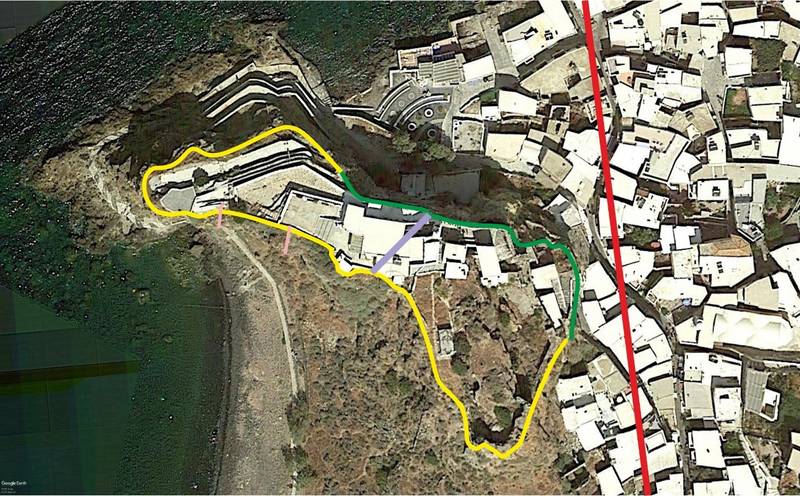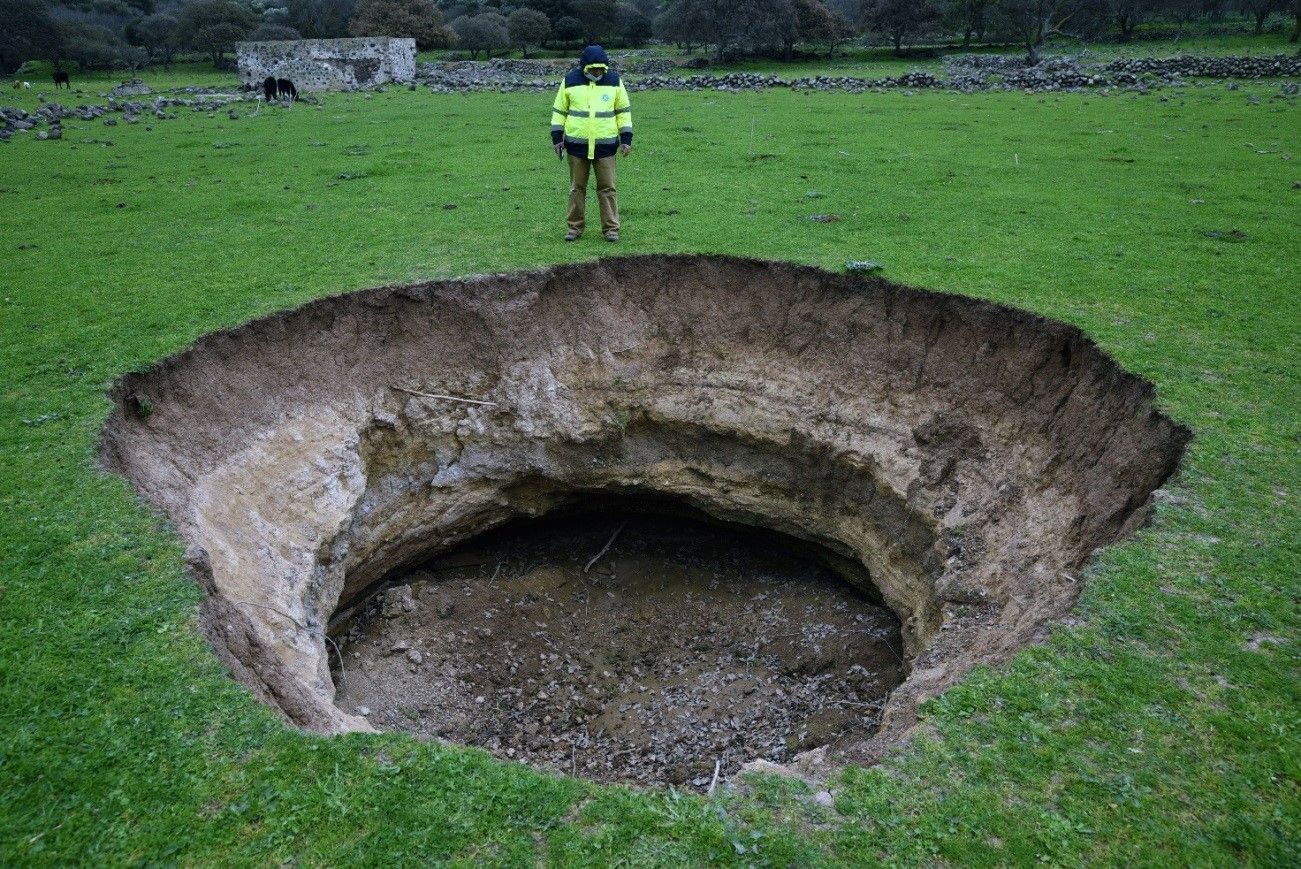A team from the Hellenic Survey of Geology and Mineral Exploration (H.S.G.M.E.), composed of scientific personnel from the Directorate of Natural and Technological Hazards Management, visited the island of Nisyros between February 14 and 23, 2021, to conduct an on-site inspection, observations, and a risk assessment within the framework of the Rapid Response Team of the H.S.G.M.E., regarding:
- the cracking and subsidence phenomena occurring in the Lakki area on the floor of the Nisyros caldera, and
- the rockfall and fracturing phenomena in the area of the Holy Monastery of Panagia Spiliani in Mandraki, Nisyros.

Vertical or negatively inclined slopes on the southern side of Oxos Hill. Intense fractures are marked as potential detachment planes of rock blocks (yellow lines), above the path leading to Chochlaki Bay. The weathered foundations of the western wall of the monastery buildings are also indicated (red arrow).
The H.S.G.M.E. team, consisting of Dr. G. Vougioukalakis, volcanologist and Head of the Department of Natural Hazards of the H.S.G.M.E., and K. Kontodimos, hydrogeologist from the same department, visited and studied the progression of the fracturing and subsidence phenomena of the sediment fill on the floor of the Nisyros caldera in the Lakki area. This phenomenon first appeared in 2001 and continues to evolve to this day. The team identified new and very recent cracks and subsidence, confirming the expansion of the phenomenon across the northern part of the Lakki area, at elevations between 115 and 108 meters (caldera floor).
From the new observations, measurements, and recordings, it was confirmed that the phenomenon is not related to any reactivation of the Nisyros volcano, which remains in a state of dormancy.
The visit to the Holy Monastery of Panagia Spiliani took place following a request from the Metropolis of Kos – Nisyros, seeking an assessment of the current conditions related to the geotechnical issues affecting the monastery and its surroundings. The team conducted an inspection and field observations, identifying several geotechnical problems, such as fractures in the monastery area and the adjacent slope (Oxos Hill), unstable rock blocks on the slopes — particularly along the coastal path leading to Chochlaki Bay — and other geotechnical phenomena requiring immediate intervention through properly designed stabilization measures, which will be detailed in a subsequent report.

Overview map of observations by the H.S.G.M.E. team at the Holy Monastery of Panagia Spiliani. Red line: active Langadi fault; purple line: fracture near Panagia Spiliani; orange line: main Oxos fractures; green line: stable Oxos ridge (supported works from 1986–87); yellow line: unstable Oxos ridge and ancient wall requiring urgent reinforcement and stabilization.
In addition, during the visit, the H.S.G.M.E. team carried out maintenance work on the existing real-time monitoring stations that record the physicochemical parameters of hydrothermal fluids installed at the Stefanos hydrothermal crater and the Nisyros Thermal Baths as part of the GEOTHERM project, implemented by the Department of Geothermal and Thermal Mineral Resources (GEOTHE) of the H.S.G.M.E.. A new monitoring station was also installed at Avlaki, Nisyros, which records and transmits real-time data from the local thermal spring discharge.
Header photo: Recent subsidence point of the sediment fill on the floor of the Nisyros caldera, in the northeastern part of the Lakki area.






